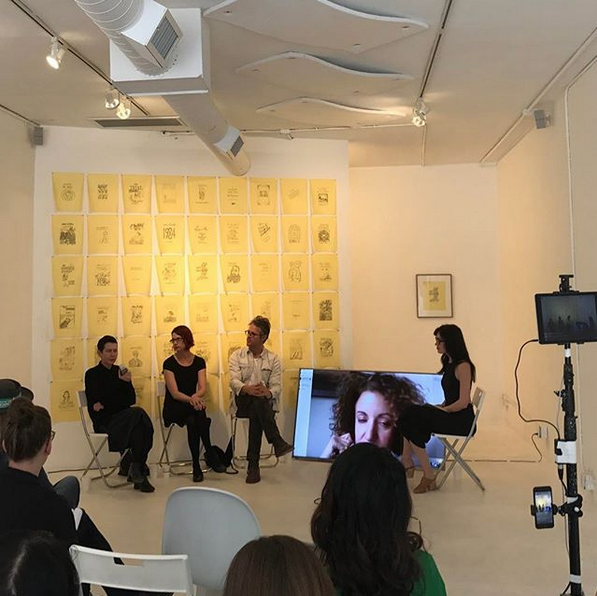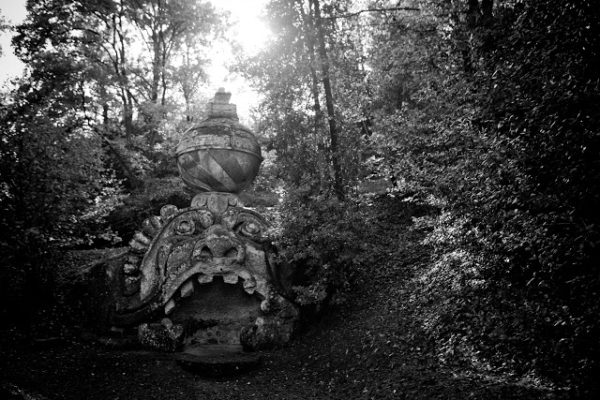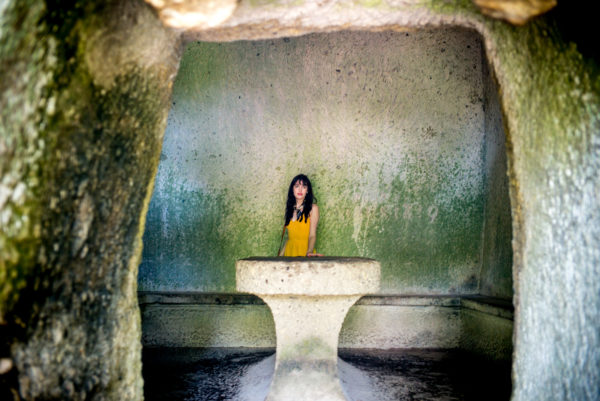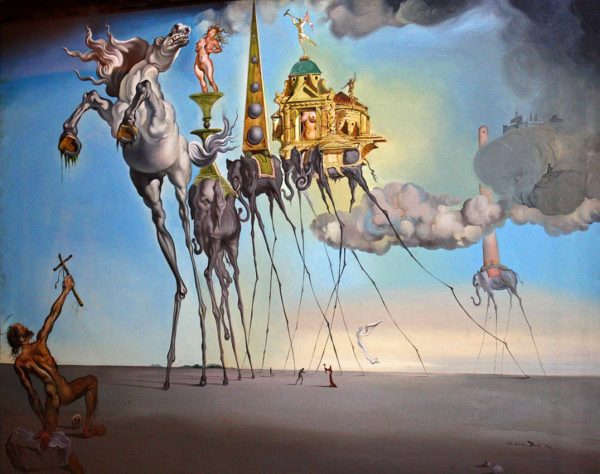“My plan was never to get married. I was going to be an art monster instead. Women almost never become art monsters because art monsters only concern themselves with art, never mundane things. Nabokov didn’t even fold his own umbrella. Vera licked his stamps for him.”
—Jenny Offill, Department of Speculation
In May, I moderated a panel at Chainlink Gallery, during which several artists were asked to speak on self-censorship. We covered much of the expected ground: what it means to create under the Trump administration, the ways that we implicitly or complicity aspire to be more palatable, not to alienate people, and so on. But the most fascinating element to emerge from the conversation, I believe, was the question of art’s relationship to ethics—how might we balance ethical convictions while recognizing work that tests the limits of permissibility?

One of the artists on the panel, Vanessa Place spoke of the “padding” around the aesthetic encounter as a consumer demand. The audience, she says, often self-censors, not wanting to see or hear something uncomfortable, not wanting to be engaged in a conversation they don’t want to have. Place’s work is largely focused on removing this padding, and giving the consumers of art what they likely do not want, often to critique. While the age of social media and art-on-social-media has made the phenomenon of self-censorship as an artist or a viewer more evident, it has always been present in the artistic landscape.
Place’s words brought to mind the gardens of Bomarzo, the “Parco dei Mostri,” where I visited for the first time last summer. The 16th-century Italian gardens, about an hour outside Rome, were created not to please, but to appall. The era was the peak of the Renaissance garden, where symmetry ruled as a celebration of man’s order over nature. Conceptualized by Prince Vicino Orsini after he returned from war only to have his beloved wife die, the Parco dei Mostri rejected the harmony and elegance of the Renaissance gardens in favor of bizarre monsters, despair and chaos. A war elephant crushing a Roman soldier, monstrous fish heads, a violent clash of the Titans, and a disorienting tilted house were designed to shock and confuse the viewer into delirium.

By Tao Ruspoli
A reactive response to the ideals of the Renaissance is evident throughout the whole garden. A massive orc with its mouth open, perhaps the most famous statue in the garden, originally read Lasciate ogni pensiero voi ch’entrate (Abandon all thought, ye who enter here), likely rejecting the famous quote from the Divine Comedy, in which the gate of hell was inscribed: “Abandon all hope, ye who enter here.” Currently, one can only read ogni pensiero vola (Every thought flies). The park is aware of the response it demands from the viewer. Above a bench, there is an inscription critiquing humans for moving through the world seeking “ high and splendid marvels,” encouraging them to instead observe the horrible faces and monsters of Bomarzo.“In Bomarzo the scenery is overwhelming, the observer can not see because he’s immersed in a gear of feelings […] capable of confusing the ideas to harass emotionally, to participate in an absurd, playful and hedonistic world of dreams” said Italian art critic Bruno Zevi.

By Tao Ruspoli
Unsurprisingly, the Surrealists were drawn to the monster garden (which was roughly made in a Mannerist style, a kind of sixteenth century surrealism). Salvador Dali loved the Parco dei Mostri and shot a short film there, as well as basing his painting The Temptation of Saint Anthony on the garden.

Salvador Dalí’s The Temptation of Saint Anthony
Perhaps one could make the argument that all art is reactive. Elaine Scarry wrote in On Beauty and Being Just that “the fact that something is perceived as beautiful is bound up with an urge to protect it, or act on its behalf,” but to me, it is more interesting to look at the opposite urge: to destroy beauty. Similar to how Bomarzo was a reaction to destroy the beauty of the Renaissance, Marina Abramović’s Rhythm 0 demonstrates the audience’s compulsion to destroy the beauty of her body, Audrey Wollen’s Instagram project attacks medical misogyny through the objectification of her body, Place’s work demands the audience confront the echo chamber of a comfortable life on social media, and so on. All of these projects entail forcing the audience, and perhaps the artists themselves, into a place of discomfort. I am interested in investigating the nuances of individual and group responses to an aesthetic encounter — and what our comfort or discomfort says about us inwardly. As Maggie Nelson points out in her phenomenal work of criticism, The Art of Cruelty:
In any case, one thing seems clear: whether or not one intends for one’s art to express or stir compassion, to address or rectify forms of social injustice, to celebrate or relieve suffering, may end up irrelevant to its actual effects. Some of the most good-intentioned, activist, “compassionate” art out there can end up being patronizing, ineffective, or exploitative. And, of course, vice versa: much of the work that has no designs on eliciting compassion or bringing about emancipation can be the most salutary, the most liberating… For not only do our work and words speak beyond our intentions and controls, but compassion is not necessarily found where we presume it to be, nor is it always what we presume it to be, nor is it experienced or accessed by everyone in the same way, nor is it found in the same place way over time. The same might be said of cruelty.
This gap between what we think constitutes compassion — or goodness, or beauty — and the actuality is a space worthy of exploration. At the risk of boxing myself in, I decided to pursue this as a premise for a column: examining the art that elicits a sense of disruption and soulful danger (as a columnist, I reserve the right to interpret this premise loosely in future pieces!). I want to think seriously about how we engage art that proposes to disgust or disturb us. In order to do so, my articles will necessarily take seriously questions like: What makes us look at a piece of art? What makes us turn away? What does it say about our preconceptions, our culture, and our souls? My hope is to probe to understand the connections and requisite aberrations between what makes us comfortable and what makes us uncomfortable.

Marina Abramović’s Rhythm 0
Marina Abramović’ said in a 1999 Art Journal interview that at in the 70’s, she felt that “art should be disturbing rather than beautiful. But at my age now, I have started thinking that beauty is not so bad. My life is full of such contradictions.” This is the space I hope to explore with Art Monster: one of beauty, terror, and artful contradiction.


